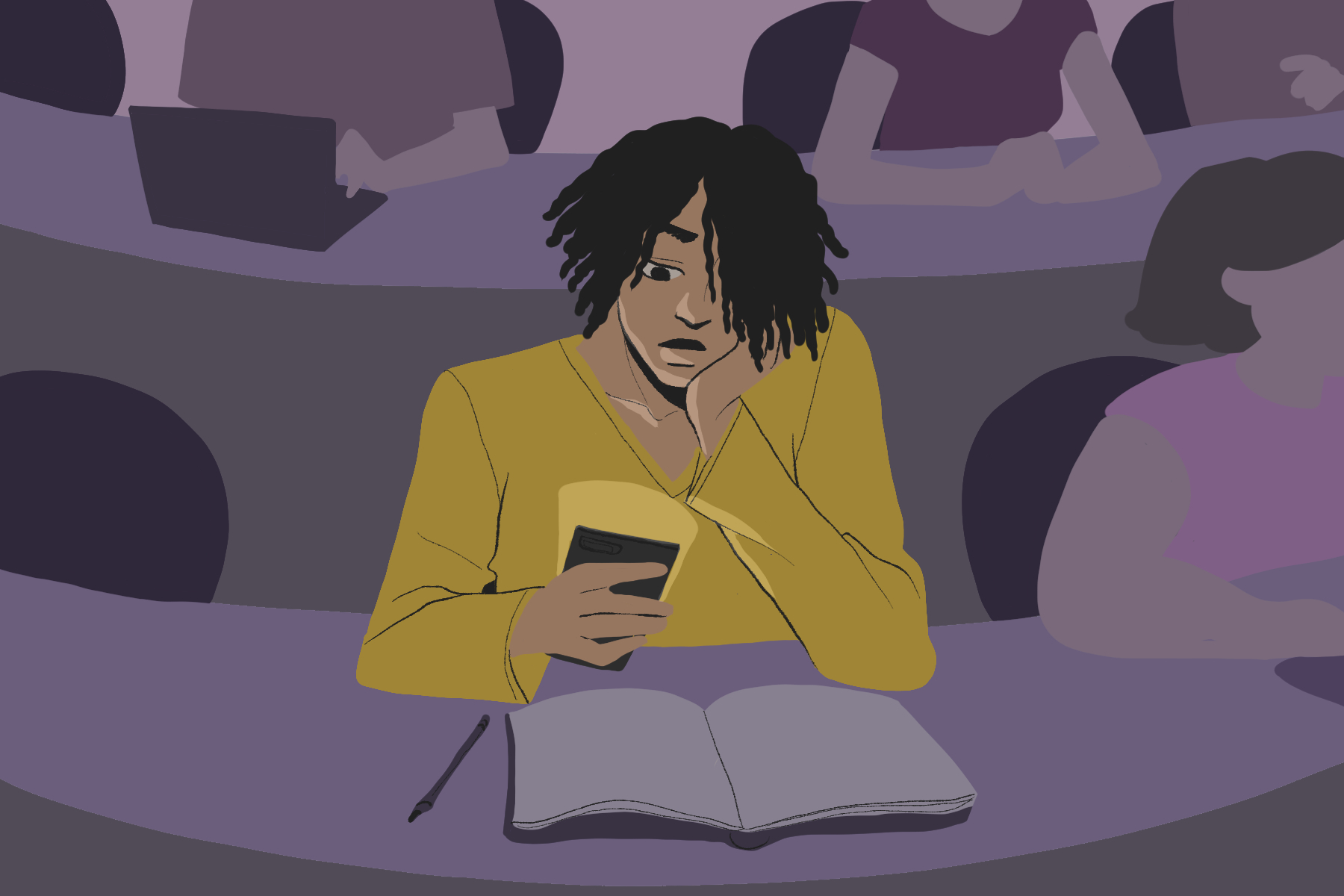Over the past few decades, social media has become deeply ingrained into Americans’ everyday lives. In fact, upwards of 223 million people in the United States report using social media, comprising 83% of the nation’s population. While social media has undoubtedly brought an array of benefits, research shows that it may be deeply harmful to some cognitive functions, such as the ability to concentrate. As social platforms rise in popularity, it is becoming increasingly important to acknowledge their potential impact on attention span.
Due to the prominence of iPhones and a variety of social media apps, Americans today are constantly bombarded with an overload of information. As of last year, people consumed roughly five times as much information as they did in the 1980s. Social media users are quite accustomed to receiving digital information rapidly, which has led to a shift in many individuals’ attention spans. Recent data indicates that frequent social media use trains individuals’ brains to operate in a very short time frame and diminishes individuals’ ability to concentrate for prolonged periods of time.
Phantom Vibration Syndrome
Social media has pervaded Americans’ lives, and “Phantom Vibration Syndrome” helps prove it. Phantom Vibration Syndrome is a phenomenon in which individuals hear or feel their phone vibrating — indicating that they have a notification — when in reality, no such notification was received. This is classified as a tactile or auditory hallucination, because individuals’ brains are perceiving a stimulus that does not actually exist. Given that up to nine out of 10 cellphone users report having experienced Phantom Vibration Syndrome, its prevalence is both striking and deeply concerning. It also highlights the vigilance that people demonstrate regarding incoming messages or updated information; people are continually monitoring and preparing to receive notifications from various forms of social media.
In general, constant notifications from social platforms are highly disruptive. However, Phantom Vibration Syndrome indicates that social media’s impact on attention span is even greater than most people assume. Social media may not only interfere with individuals’ attention when they are actively engaging with it or receiving notifications, but on a more continuous basis. In other words, many individuals have become so accustomed to regular notifications and disruptions from social platforms that they are constantly distracted.
Instant Gratification
Social media is designed to capitalize on individuals’ shortened attention spans, and many apps have phenomenally succeeded in this goal. TikTok, for example, calls upon users to scroll through unrelated videos from different creators, which range anywhere from 15 seconds to three minutes long. In the same regard, Instagram is designed for users to endlessly scroll through countless posts from their friends, family, celebrities and strangers. Both of these apps are formatted in a way that inhibits users from truly taking the time to process information, thereby encouraging mindless and rapid consumption of social media.
Snapchat is another prime example of an app that has taken full advantage of users’ shortened attention spans. By design, Snapchat users can only view content for a certain number of seconds, catering to individuals’ inability to stay focused for longer periods. Snapchat’s success can largely be attributed to the fact that the app has been curated to serve users with an inability to truly pay attention for longer than a few seconds.
Regular consumers of social media are unwittingly trained to seek instant gratification from scrolling through videos and pictures and responding to messages. In the long run, this behavior diminishes social media users’ ability to pay attention for longer periods of time, and users often struggle to pay attention to anything that does not provide immediate excitement and gratification.
Shifting Attention Between Content
Social media users spend a surprisingly short amount of time on any single piece of media content. In fact, on Facebook, desktop users spend an average of 2.5 seconds on a given piece of content, while mobile users spend a mere 1.7 seconds. In this short amount of time, Facebook users interact with advertisements, news stories and posts. In any case, Facebook users’ interactions with media content are very brief.
In brief increments, many sources of content are contacted, and exposure to stories and products far exceeds what would be expected in such a short time frame. Social media inherently involves constantly shifting attention between varying content. This is true regardless of whether an individual engages with Facebook, Snapchat, TikTok, Instagram, Twitter or any other comparable social platform.
Media Multitasking
Given that a multitude of social platforms exists, it is very common for Americans to simultaneously interact with multiple forms of media. This phenomenon — commonly known as “media multitasking” — is highly correlated with reduced attention spans. People who exhibit a high tendency toward media multitasking face the greatest risk of attention problems. In fact, recent evidence indicates that heavy media multitaskers show signs of reduced short-term and long-term memory. Furthermore, this group also experiences more frequent attention lapses on a daily basis.
Even on its own, frequent consumption of a single form of social and digital media is linked to decreased attention spans. However, the impact of social media on attention span is even more substantial considering the multiple forms of media at play. Behaviors such as scrolling through TikTok or Instagram while simultaneously watching TV or rapidly switching between apps are strongly correlated with serious and long-term attention problems.
A Need for Awareness
Given the prevalence of social media in the United States, millions of Americans may be unknowingly ruining their concentration and attention span. It is crucial that users are aware of the connection between their media behaviors and their cognitive abilities. While it is not necessary for individuals to stop social media use altogether, it may be highly beneficial for users to take precautions and monitor their consumption of digital and social platforms. Specifically, social media users may be able to preserve their attention span by avoiding media multitasking. Furthermore, individuals will likely benefit from engaging with media slowly, rather than rapidly, and purposefully, rather than mindlessly.
















